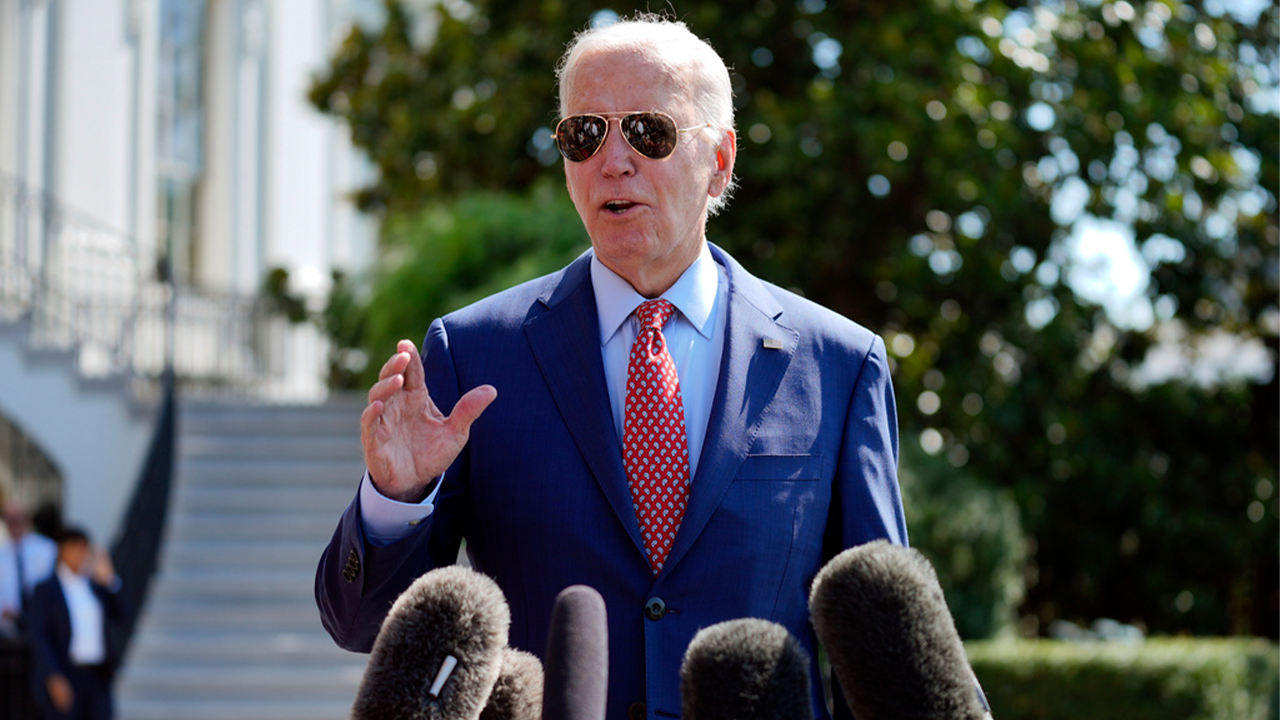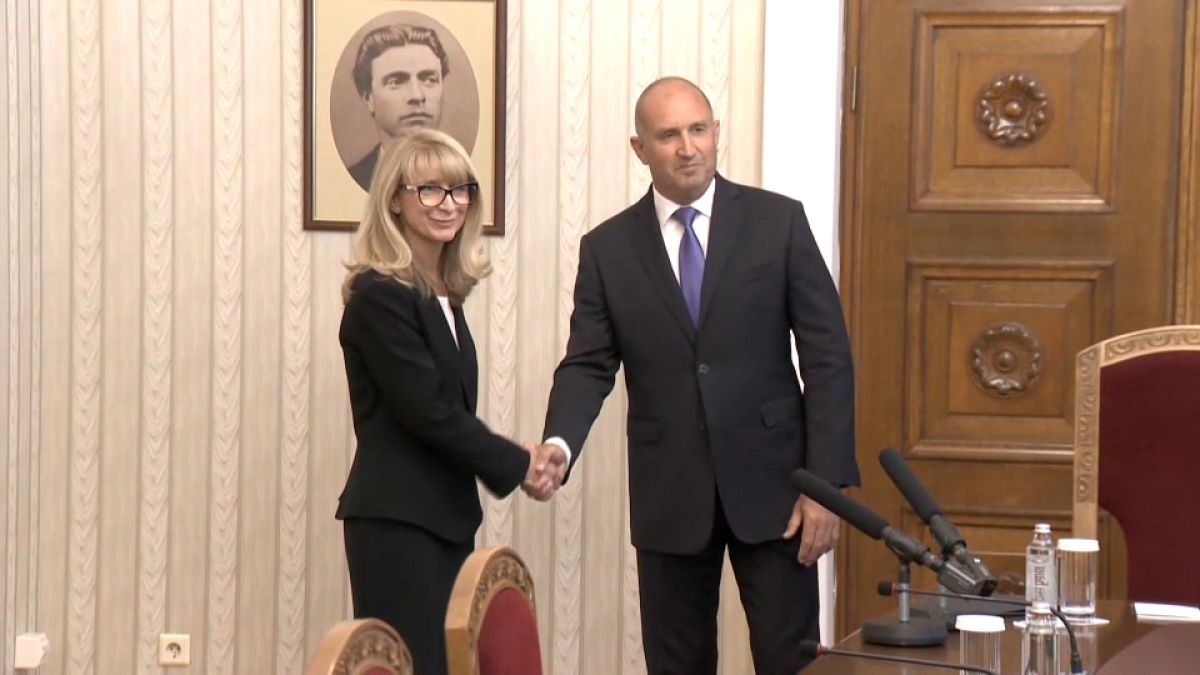Fitness
Orangetheory Fitness Welcomes the Return of Its PSL Workout
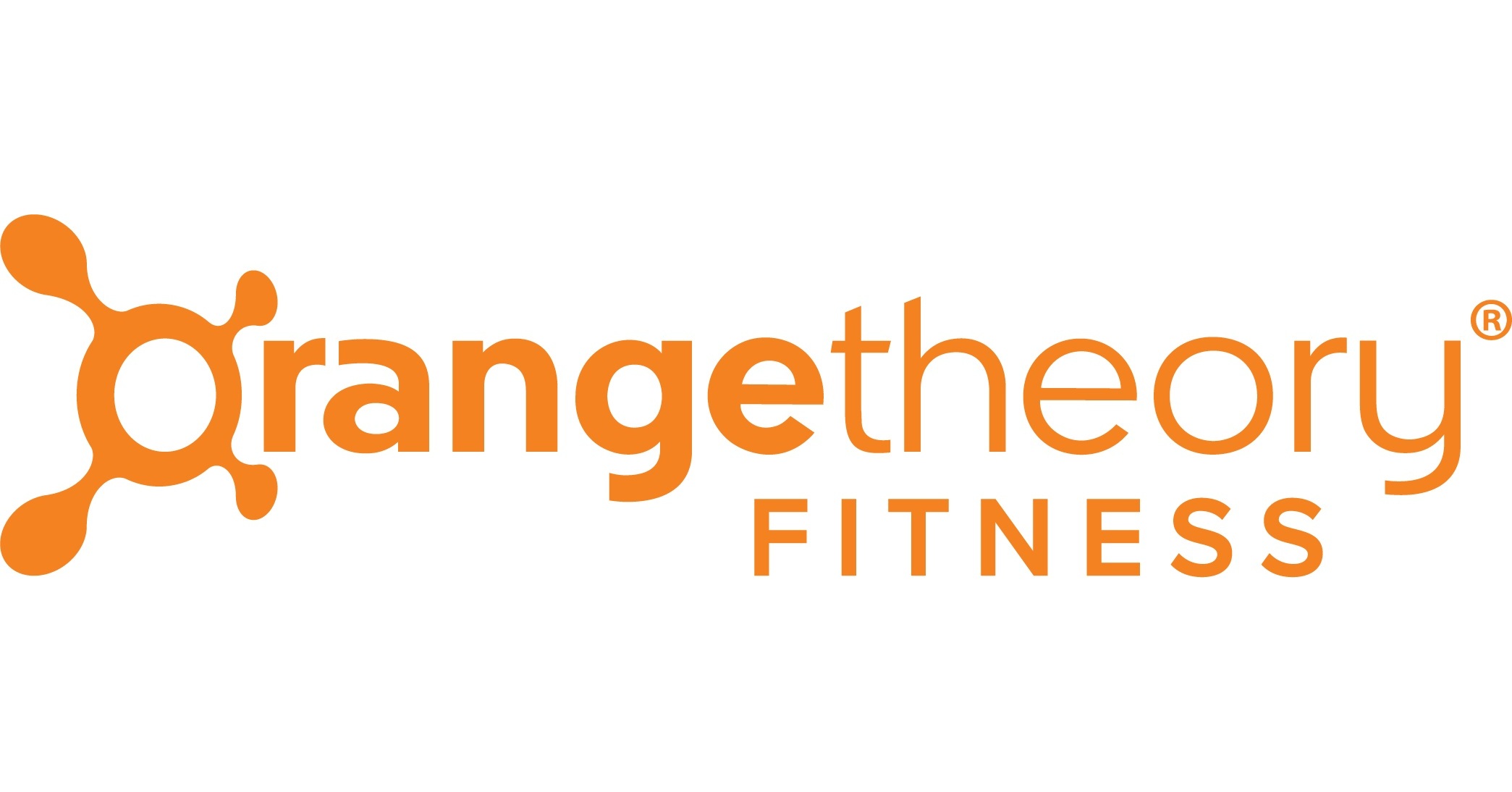
This (P)ress (S)quat and (L)unge-focused class is guaranteed to usher in all the “fall” feels
BOCA RATON, Fla., Aug. 19, 2024 /PRNewswire/ — As the leaves start to change, Orangetheory Fitness (OTF) is (pumpkin) spicing up fall fitness routines with the return of its fan-favorite “PSL” workout. On August 27th at OTF, PSL stands for (P)ress, (S)quat, and (L)unge – and this day of classes is bound to be the perfect kickstart to the season.
“This PSL workout is our special one-day-only event that brings a challenging, yet fun twist to our members’ fitness routines,” says Rachel Vaziralli, Director of Fitness Design at Orangetheory Fitness. “It’s a fantastic way to infuse the spirit of fall into our science-backed classes, making the seasonal transition both energizing and effective.”
To celebrate the day, select OTF studio locations are offering an array of post-workout pumpkin treats so members can refuel and connect over their favorite fall flavor. These may include a coffee shop gift card, a ‘make it yourself’ PSL station, real pumpkin spice lattes post-class or limited-time offerings from RXBAR and Smoothie King. RXBAR will offer their limited-edition Pumpkin Spice bars, while Smoothie King will provide samples of its new Pumpkin Power Meal Smoothies. Special discounts and offers from RXBAR and Smoothie King will also be available through OTF and Smoothie King’s mobile app so members can satisfy their PSL cravings beyond the studio.
All OTF workouts are designed in-house by fitness experts and rolled out to their network of more than 1,500 locations globally. The fitness design team creates customized heart rate-based interval training workouts for members daily and curated the PSL class, which features a press squat and lunge-focused floor exercise section, multiple pushes on the rower and a 23-minute endurance block on the treadmill.
To learn more about Orangetheory and join the PSL class on August 27th, visit www.orangetheory.com to book your first class free. Pumpkin-lovers can contact their local OTF studio to learn more about this year’s PSL post-class offerings.
About Orangetheory
Orangetheory® Fitness (orangetheory.com) is a heart rate-based group workout that combines science, technology and expert coaching to help members live a longer, more vibrant life. Orangetheory workouts are backed by science and designed to supercharge your metabolism and cardiorespiratory health for more results. The workouts utilize connected technology to track performance, so members can view their detailed results in real-time, and monitor progress over time. Each of the workouts is led by a certified coach to ensure members of all fitness and ability levels can be successful and continually challenge themselves. One of the world’s fastest-growing franchise companies, Orangetheory franchisees have opened more than 1,500 studios in all 50 U.S. states and 24 countries. Visit https://www.orangetheory.com/en-us/international-opportunities/ for global franchise opportunities.
SOURCE Orangetheory Fitness

Fitness
Low sex drive? Here are 6 ways exercise could help you

Think about the best sex you’ve ever had. Now, consider how you felt afterwards: exhilarated, calm, and pleasantly tired…not unlike how you’d feel after a great workout. Well, that’s no coincidence. In fact, there’s a huge (and perhaps surprising!) link between sex and exercise.
If you enjoy getting sweaty at the gym and between the sheets, you might’ve noticed that both activities are stress relievers, says Jenni Skyler, PhD, LMFT, a certified sex therapist and resident sexologist for Adam & Eve, and director of the Intimacy Institute based in Aspen, Colorado. That’s because they release a similar group of feel-good hormones, such as norepinephrine, dopamine, and adrenaline.
And while the two activities boast similar benefits when done separately, they can enhance each other, too. If you’re looking for a sign to book your favourite strength training group fitness class before date night, here it is: Not only can exercise benefit your cardiovascular health and mood—it also has the power to improve your sexual arousal, satisfaction, and well-being, according to a study in Sexual Medicine Reviews.
Why is this, exactly? And how can you optimise your workout routine to boost your, ahem, performance in the bedroom? Ahead, read up on the short- and long-term effects of exercise on your sex drive—plus, exactly *when* to work out to get the biggest bang for your burpees.
1.Exercise can have immediate effects like increasing blood flow—which can, in turn, improve your sex drive
Turns out, pumping iron = pumping blood. Acute (or moderate) exercise increases blood flow to the genitals, activating the sympathetic nervous system, says Amelia M. Stanton, PhD, a researcher and assistant professor in the Department of Psychological & Brain Sciences at Boston University. All of this ups the feeling of physiological sexual arousal around the vagina.
Certain workouts can also benefit you sexually, too. When you’re doing resistance training, the body releases androgens such as testosterone, the very hormone responsible for sexual desire, says Nan Wise, PhD, a licensed psychotherapist, cognitive neuroscientist, and certified sex therapist based in West Orange, New Jersey. The same applies to cardiovascular training, especially once you hit a certain intensity. When you reach that point when you’re breathing heavily and it’s difficult to hold a conversation—also known as zone four cardio—you’ll experience a release of testosterone, as well as a ‘runner’s high,’ Skyler says. This comes from endocannabinoids, a.k.a. another feel-good substance released in your brain after cardio.
Plus, training cardio can increase your cardiovascular capacity because your respiration and heart rate tend to increase during this type of exercise. The heart rate increase you experience when working out is similar to the physiological feelings you experience when you’re turned on or in the honeymoon stage of a new relationship, Wise says. You know how your heart starts beating really fast, and you can feel butterflies in your stomach? Well, this chemical state—which happens in the body, but is activated by the brain—is replicated when you work out and your heart rate goes up. This form of physical arousal can kick your sex drive into gear, she says.
Yet another reason working out can improve your sex life? A regular workout routine can help you feel more in touch with your physical self. Exercise is ‘one of the best ways’ to practice being present in your body, says Wise, because you’re focusing on the sensations you feel as you move, like whether you’re tired or sore. This can enhance your capacity to feel present sexually, too.
Although exercise does have immediate physical effects that can enhance arousal, there isn’t a ‘one-size-fits-all’ ideal time frame between working out and having sex because everyone’s body is different, Skyler says. By leaning into your own preferences, you’ll work out when you have the most energy and can then reap the rewards of your increased sex drive, Wise says.
So, if you’re more of a morning person, work out in the a.m., and if you’re more of a night owl, work out in the late afternoon. But, word to the wise exerciser: People usually experience benefits first thing in the morning or at lunchtime, per Skyler, because it builds their confidence for the rest of the day and, therefore, can put them in the mood for sex.
Plus, while some people might feel confident and ready for bedroom activities immediately after their workout, others might need an hour—or four—to cool off before feeling their best. ‘Testing out your own system is the best way to figure out your timeframe,’ she says.
Either way, you’ll feel the effects of those feel-good endorphins within a few minutes to a few hours of exercising, Skyler says, which might put you in the mood immediately. Stanton specifically found that genital arousal is most heightened 15 to 30 minutes after a moderately intense workout, like running on a treadmill for 15 to 20 minutes. And unless you’re running a marathon, a moderate workout won’t make you so exhausted that you can’t perform in the bedroom afterwards.
2. Maintaining a regular exercise practice boosts your physical, mental, and sexual health
For one thing, your testosterone levels will continue to increase as you lift weights long-term (think: a few months), kicking your sex drive into high gear and increasing your libido.
Because doing cardio regularly can increase your cardiovascular capacity, it’ll help you last longer in bed, which benefits both those with vulvas and penises. ‘The more cardiovascular fitness you have, the more confidence and capacity you have in the bedroom,’ Skyler says.
Plus, because regular exercise also increases blood flow, you’ll have more endurance and vitality during sex, Wise says. More blood circulation in the body provides the tissues with oxygen and other nutrients that give you more endurance, both at the gym and in the bedroom. And the opposite is true: Because your body can take in more oxygen, all of your body systems can run better too, she adds.
Not to mention, you’ll literally become stronger, allowing you to try different, and perhaps more physically demanding, sex positions and acts. (And if you’re lasting longer, that means you’ll have more time to experiment with tons of new positions, too.)
But on a more psychological level, exercise’s effects on your mental health—such as reduced chronic stress hormones—will also help your sex drive in the long-term. When you get stressed, the body is automatically flooded with the stress hormone, cortisol. However, sex and exercise ‘are natural healthy ways to reduce the nervous system’s overactivation,’ Wise says.
Exercise specifically reduces cortisol flooding so your parasympathetic nervous system (the system that helps you relax) can reset and be more effective at its restorative bodily functions, like digesting food, repairing muscles, and removing toxins from the body, Wise says. And, of course, when your parasympathetic nervous system spends more time in the restorative state, you’re less stressed, and more likely to become aroused. Additionally, when the sympathetic nervous system (the system that enacts your fight-or-flight stress response) is aroused, it’s accompanied by cortisol, which lowers your testosterone, hijacking your sex drive and making it hard to focus on pleasure, says Wise.
The biggest long-term effect that exercise can have on your sex drive, however, is the feeling of confidence you’ll gain from working out over time. ‘If you feel good exercising and then walking down the street, or going out to dinner, you’re going to feel good in the bedroom,’ Skyler says.
3. Regular exercise can uniquely benefit those going through perimenopause and menopause
Going through menopause can decrease your libido, due to hormonal shifts. But those who exercise regularly often experience reduced menopausal side effects and have better sexual functioning, Wise says. (So, whether you haven’t yet reached menopause or you’re already there, you should still start exercising to reap these benefits!) Pelvic floor training, specifically, increases sexual satisfaction and decreases sexual dysfunction in women of all ages, she says.
Strength training can also help mitigate other symptoms of menopause, too—such as loss of muscle mass and bone density—especially when coupled with eating protein for your muscles, and upping your calcium intake for bone density, Skyler says.
However, when it comes to the vaginal dryness that some might experience in (peri)menopause, it’s unclear whether exercise can help with that, Wise says. While exercise can help increase arousal, lubrication does not always correlate with sexual arousal. If vaginal dryness is causing discomfort and pain during sex, it’s best to consult your doctor and assess treatment options, recommends Wise.
4. Exercise can also improve the sex lives of people with other health concerns, too
While exercise is helpful for counteracting sexual dysfunction symptoms among those going through (peri)menopause, it can also help other groups experiencing libido-diminishing side effects, such as those who are on SSRI medications, those who have had hysterectomies, and those with cancer.
For starters, exercise is a well-known mood booster, and it can even potentially decrease someone’s levels of anxiety and depression, per research in Trends in Molecular Medicine. Mental health conditions such as those can potentially inhibit someone’s sex life and make them crave physical intimacy less, so exercise can also be helpful for this group, Stanton says. And while you can’t necessarily counteract the sex drive-related effects of an SSRI, you can diminish them with exercise, Skyler adds.
For people experiencing a low libido, a moderate amount of sympathetic nervous system activation through exercise is helpful for improving sexual arousal because it triggers genital blood flow, Stanton says. The key word here is “moderate”—you don’t want to over-activate the sympathetic nervous system and majorly fatigue your body, but you also don’t want to under-activate it and end up not seeing any results.
5. Moderate exercise is the best type of workout for your sex drive
Resistance training and weightlifting in a moderate fashion can release testosterone, which will increase your sex drive, Wise says. But there’s one type of training that can really help you reap the best results: Pelvic floor and core training, both of which have similar benefits when it comes to increasing blood flow to the genitals, and therefore, improving sex drive. Pelvic floor muscle training is specifically beneficial for those going through (peri)menopause, those who are on SSRI medications, those who have had hysterectomies, and those with cancer, when it comes to increasing sexual satisfaction and arousal, and decreasing sexual dysfunction, Wise and Stanton say. Try kegels (unless you have pelvic floor issues or pain during intercourse) and core work through strength training exercises or the stationary bike.
But don’t sleep on cardio. In fact, the best way to maximise your sex drive through a workout is by running on the treadmill for 15 to 20 minutes, according to Stanton’s research. She recommends running at a moderate-to-high intensity level that gets you to 60 to 80 percent of your VO2 maximum, which is the max threshold of oxygen your body can use at a time, Claudette Sariya, CPT, a NASM-certified personal trainer and founding instructor of Sole Fitness, based in New York City, previously told Women’s Health US. (The higher it is, the more endurance you have.)
A caveat: With a moderate workout like this, you shouldn’t feel too fatigued to have sex immediately afterwards. But a gruelling workout—like a training session for an Ironman or marathon—can have negative immediate effects on your sex drive. Sure, the workout itself may increase your testosterone, which can help boost arousal in the long-term. But because you’re also using up so much of your body’s energy resources, you might feel too depleted to have sex that day, Wise says.
So, when you’re planning your workouts for the week—whether you’re optimising them for your sex life or not—just make sure you’re listening to your body, Wise says. Some days you’ll be craving a more strenuous workout, and other days, you’ll want a lighter one.
6. Working out *with* your S.O. can improve your relationship, too
When you work out with a partner, your nervous systems are syncing—a process called entrainment, Wise says. So, you’re not just experiencing the individual benefits of working out; you’re experiencing them together. ‘There’s a synchrony that happens, like a falling into a similar sort of pattern between the brain, the heart, and the nervous systems,’ Wise says. Your heart rates might even sync up, she adds. This can be beneficial because it helps co-regulate your nervous systems, so your emotions are aligned.
It can also help both of your moods improve and boost your emotional bond, simply because joint exercise involves the physical and emotional intimacy of doing an activity together, Skyler says. Plus, it can be straight-up hot to watch your partner sweat—whether you’re sharing a pull-up bar or bed.
Meet the Experts: Jenni Skyler, PhD, LMFT, is a certified sex therapist and resident sexologist for Adam & Eve, and director of the Intimacy Institute based in Aspen, Colorado. Amelia M. Stanton, PhD, is a researcher and assistant professor in the Department of Psychological & Brain Sciences at Boston University. Nan Wise, PhD, is a licensed psychotherapist, cognitive neuroscientist, and certified sex therapist based in West Orange, New Jersey. Claudette Sariya, CPT, is a NASM-certified personal trainer, group fitness instructor, on-camera coach, and founding instructor of Sole Fitness, based in New York City
Read now: I upgraded my walks with a weighted vest
Related stories:
Addison Aloian is the assistant love & life editor at Women’s Health and a NASM-certified personal trainer (CPT). She covers all things lifestyle, astrology, relationships, and fitness. In her free time, you can find her lifting weights at the gym, running on the West Side Highway in New York City, and watching (and critiquing!) the latest movies that have garnered Oscars buzz. In addition to Women’s Health, her work has also appeared in Allure, StyleCaster, L’Officiel USA, V Magazine, VMAN, and more.
Fitness
Exercise: The Most Powerful Longevity Drug

Want to live longer? Get moving!
“I think most often people think of exercise as a tool to lose weight and get in shape, and it certainly is, but I’d argue that more importantly it can help you live BETTER, LONGER!” says Dr. Cliff Wonsettler, one of the Physical Therapists at Wonsettler Physical Therapy and Specialized Health.”Most people would love to increase their lifespan, but only if they can maintain a good quality of life-and that’s what we call healthspan. Exercise not only helps increase lifespan, but more importantly, it dramatically improves healthspan.”
According to the CDC, only 23% of Americans getsufficient exercise. 77% of the U.S. population does not exercise. And going from no exercise to just 90 minutes per week can reduce your risk of dying from all causes by 14%, as found in a study published by the Lancet. The beauty is, it doesn’t have to be complicated. “When we’re working with clients, they often feel overwhelmed because they don’t know where to start. A common question is whether they should focus on cardio or strength training. The data is clear-it really needs to be both. But the key is to start and stick with something, rather than getting trapped in analysis paralysis, or worse, thinking ‘I’ll start next month or next year.’ The challenge with exercise is that it requires a long-term commitment with no shortcuts. We all want quick fixes and instant gratification, but that’s not how living longer and living well works. It requires consistent good choices that won’t always feel rewarding in the moment.” Improving your cardiorespiratory fitness is one of the most important things you can do for your health. Cardiorespiratory fitness refers to the ability of your heart and lungs to efficiently deliver oxygen to your muscles during physical activity, allowing your body to sustain exercise over time and avoid fatigue. This level of fitness, often measured by VO2 max, is a powerful predictor of overall health and longevity. In fact, according to Peter Attia, MD, poor cardiorespiratory fitness carries a greater relative risk of death than smoking. “VO2 max may be the single biggest predictor of longevity we have,” says Wonsettler. “The data is so strong on this. Someone who’s in the bottom quartile of VO2 max is 4 times more likely to die than someone in the top quartile, according to a study published by JAMA. The evidence clearly shows that improving your cardiorespiratory fitness can significantly enhance your quality of life and reduce the risk of chronic diseases.

Conversely, strength is also a huge predictor for how long someone will live, and how well. According to the American Journal of Medicine, there was a large study done looking at 1400 people with an average age of 74. They found that within 12 years, 50% of those in the bottom quartile for lean muscle mass were dead compared to just 20% in the top quartile. “This isn’t meant to be a scare tactic. It’s a call to action. It’s never too early to start, and it’s never too late,” says Wonsettler. Reaching out to a professional trainer or a physical therapist can help you build your confidence and ensure you’re incorporating the correct exercises to meet your goals.
“That’s where we come in. We can really help a person identify workouts that will be most powerful,” Wonsettler said.
“Challenging yourself now will help you live the life you want to lead as your golden years progress,” Wonsettler said.
“As we age, it’s natural for our strength and fitness levels to change. But by focusing on a variety of exercises now, you can set yourself up to stay active and independent well into your later years. Imagine being able to walk up and down the stairs with ease when you’re 80 or 90 – it’s absolutely possible with the right approach!”
Sponsored content brought to you by Wonsettler Physical Therapy.
Fitness
This is why working out together matters: Linda McVey

Guest columnist Linda McVey is executive director of health initiatives for the YMCA of Greater Cleveland.
As someone deeply committed to enhancing the well-being of our community, I’ve come to understand the profound impact of social connections on personal wellness.
In our pursuit of healthier lifestyles, the choice between exercising alone or with others can significantly influence not just our physical fitness, but our overall well-being.
At the YMCA of Greater Cleveland, where we offer a variety of group exercise classes across our 11 branches, we see firsthand how shared fitness activities can transform lives.
These classes are more than just opportunities to break a sweat; they are vibrant communities where individuals of all ages and backgrounds come together with a shared goal of improving their health.
What makes working out in a group setting so powerful? It goes beyond the physical benefits, though those are certainly substantial.
Group exercise classes provide a supportive environment where participants motivate each other to push their limits, celebrate successes and navigate challenges together. Whether it’s the energy of a high-intensity cardio class or the mindfulness of yoga, the camaraderie fosters a sense of belonging that is essential for sustained motivation.
Research underscores the psychological benefits of exercising with others. Studies have shown that group workouts can enhance mood, reduce stress levels and increase overall satisfaction with one’s fitness routine.
The social interaction inherent in group settings not only makes workouts more enjoyable, but also creates accountability, making it less likely for individuals to skip sessions or lose interest over time.
Group exercise also serves as a powerful antidote to social isolation by fostering connections among participants. Engaging in physical activities together creates a sense of belonging, encourages camaraderie and builds supportive relationships.
As individuals share their fitness journeys, they form bonds that extend beyond the gym, reducing feelings of loneliness and enhancing emotional well-being.
The collective experience of working toward common goals reinforces community ties and nurtures a vibrant, supportive environment.
Moreover, group exercise promotes diversity in fitness experiences. In a class setting, participants can explore different workout styles under the guidance of skilled instructors, discovering new activities they may not have considered on their own.
This variety not only keeps workouts interesting, but also ensures a well-rounded approach to fitness that addresses different aspects of physical health.
For many, especially those new to fitness or recovering from health challenges, the supportive atmosphere of group classes can be particularly transformative.
It’s not uncommon to hear stories of individuals who found strength and resilience within these communities, overcoming personal obstacles with the encouragement of their fellow classmates.
Many participants report feeling empowered and inspired by the collective energy of the group, which often drives them to achieve goals they once deemed unattainable.
While solo workouts certainly have their place, particularly for those who cherish moments of introspection or prefer the flexibility of individual routines, the social dimension of group exercise cannot be overstated.
It fosters a sense of community that extends beyond the gym walls, creating lasting friendships and networks of support that enhance overall quality of life.
As we pursue our personal wellness goals, whether at the YMCA or elsewhere, let us remember the profound impact of connection. By choosing to work out together, we not only invest in our physical health, but also nurture the social bonds that enrich our lives.
So, whether it’s joining a group fitness class, forming a workout group with friends or participating in community fitness events, let’s embrace the power of togetherness in our pursuit of a healthy vibrant future.
Readers are invited to submit Opinion page essays on topics of regional or general interest. Send your 500-word essay for consideration to Ann Norman at anorman@cleveland.com. Essays must include a brief bio and headshot of the writer. Essays rebutting today’s topics are also welcome.
-

 Ohio5 days ago
Ohio5 days agoOhio taxpayers sent families $966 million for private school tuition: Capitol Letter
-

 World7 days ago
World7 days agoWhat could an EU Commissioner do to tackle the housing crisis?
-
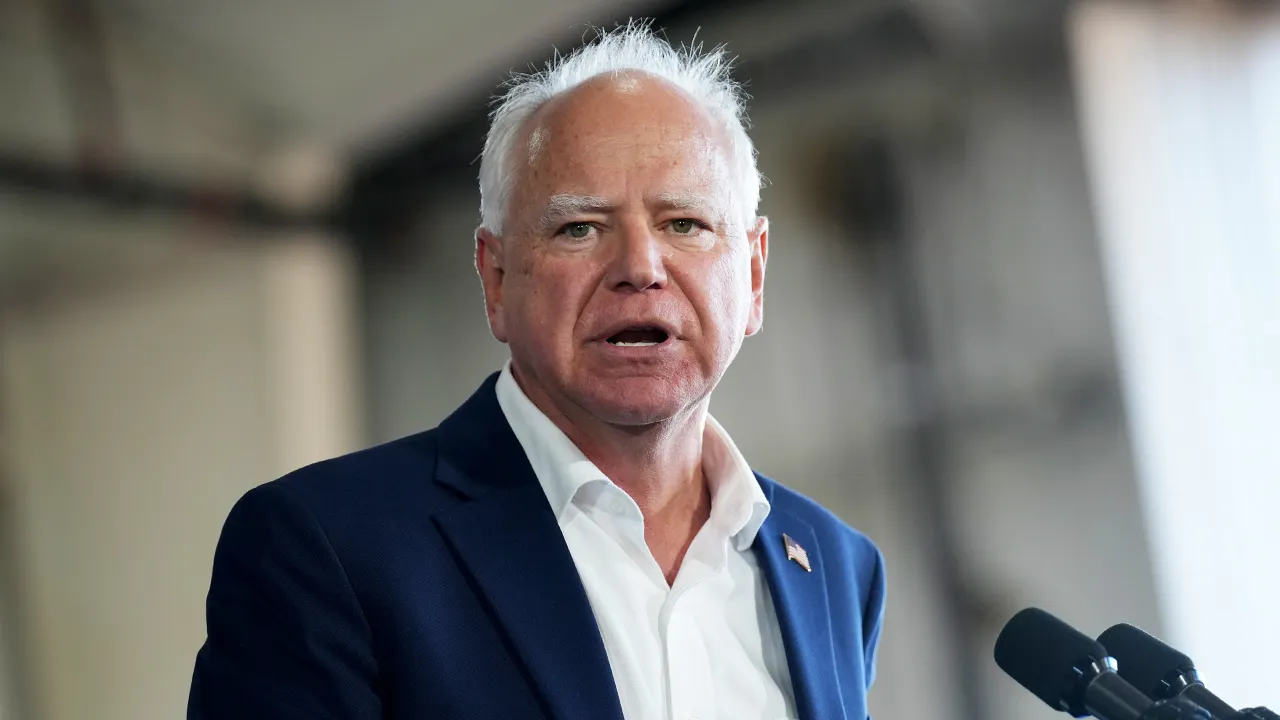
 Politics1 week ago
Politics1 week agoTim Walz 'misspoke' about using weapons ‘in war,' Harris campaign says: report
-

 Politics1 week ago
Politics1 week agoGOP states sue to stop Biden admin extending Obamacare to illegal immigrants
-

 Politics1 week ago
Politics1 week agoTrump legal cases in limbo after SCOTUS immunity ruling, freeing up schedule to campaign
-

 News1 week ago
News1 week agoPhotos: Family of Michael Brown Jr. marches on Ferguson 10 years later
-

 News1 week ago
News1 week agoCross-Tabs: August 2024 Times/Siena Poll of the Likely Electorate
-
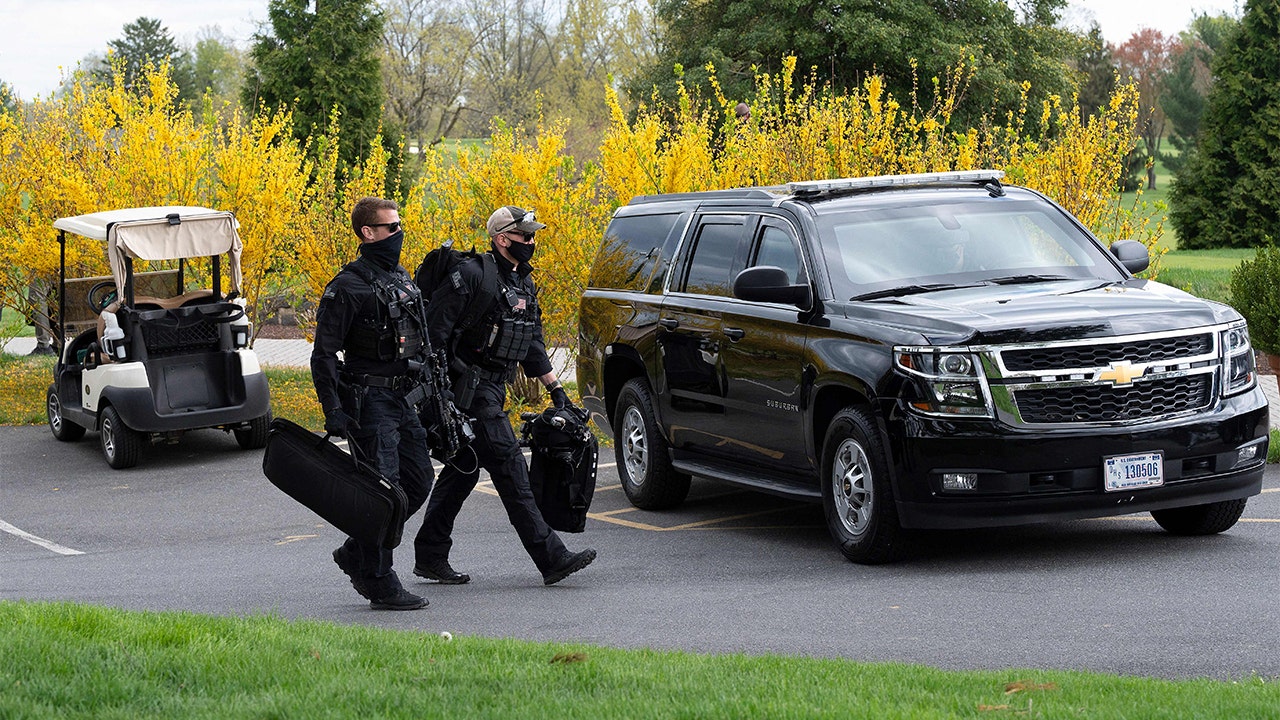
 Politics1 week ago
Politics1 week agoSecret Service apologizes after breaking into Massachusetts salon to use bathroom before Harris fundraiser
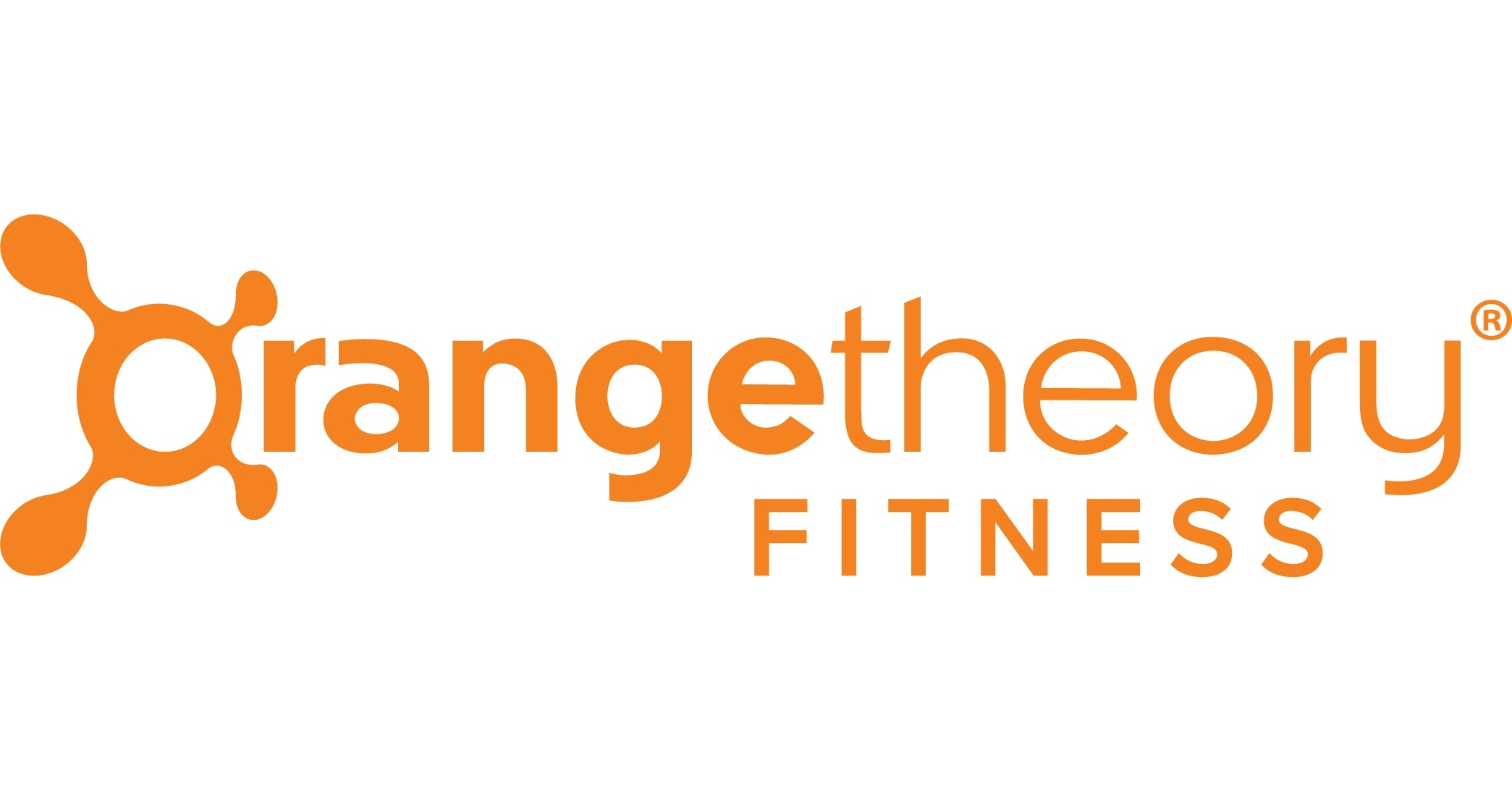
/cloudfront-us-east-1.images.arcpublishing.com/gray/7L7LYEGWGNDUFEQ7MUU3WJPY64.png)
/cloudfront-us-east-1.images.arcpublishing.com/gray/NTG2T672OZDIVBGMXXSEZR3ZL4.png)












